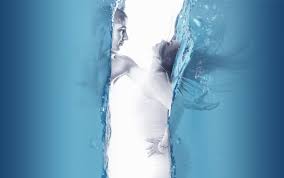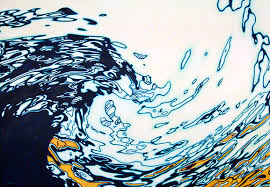About Water: Its Usage, and Conservation in Healthcare Facilities
By Husaini Sadikot ‚Äď My Cousin and Guest Blogger
Uses of water include agricultural (i.e. watering of farm or other plants or irrigation) which uses about 70% of all water usage, industrial 22%, household about 8%, recreational and environment activity uses less water than above. Of course such water usage figures would vary from country to country.                                                                                                                 
It is estimated that 97% of the water on the Earth is saltwater and only 3% is fresh water (unsalted). Slightly over two thirds of fresh water is frozen in glaciers, including glaciers on high altitude mountain ranges, like the Himalayas in and near India providing a source of water for India’s rivers, and polar ice caps in the North and South poles. The remaining unfrozen fresh water is found mainly as ground water like underground water, with only a fraction present above ground or in the air like water vapour and more condensed water vapour in clouds. Rain water from more condensed cooled by height water is nature’s desalination (removal of salt from water). Desalination can be an artificial process by which saline water (generally salted sea water) is converted to fresh, that is unsalted, water. The most common desalination processes are distillation and reverse osmosis. In areas with a lot of regular sun, desalination can be powered by solar or sun power generation systems, hence saving money and resources in the long run from electric power usage in desalination.
A lot of rain from the rain cycles originates from the oceans. Water evaporates from the oceans helped by heat from the sun and low or lower pressure above the water in the atmospheric wind cycles. Usually low pressure and higher temperature above water will help the water evaporate, similar to water under low pressure air evaporating faster, or boiling and evaporating at lower temperature the lower the air pressure. The evaporated water rises and cools and the added mass of air and water vapour can turn the low pressure area or volume into a high pressure. The wind generally flows from high to low pressure,  so if there is a neighbouring low pressure area the moist high pressure with evaporated water and water vapour clouds, will move in the direction of the low pressure. If the low pressure is on a land mass, the moist air will move towards the land mass, and if the moist air cools e.g by being forced to rise in height by a mountain range, the moist air will condense, form larger drops of water or snow and by gravity will fall as rain or snow. A low pressure area can be created by more air moving faster out of an area than moving in, like the effect of temperature on some land masses. A high pressure area may be created by more air moving faster into an area than moving out. The situation of air or wind going from high pressure to low pressure can be detected when an enclosed vacuum (very low pressure) is released and air of higher pressure rushes in.

Since so much water, unfortunately salt water is present in the oceans, it will be examined here. In areas of fresh water shortage, sea or ocean water could be used for certain purposes in hospitals and elsewhere if suitable material piping and waste water treatment is made or is available. The disease resistance of plants and animals in the sea is remarkably different from disease resistance in land animals and comparison between animals of the same or similar species are most interesting.  For example,   fresh water trout all develop terminal cancer of the liver at the average age of five and a half years, but cancer has never been found in sea trout. It is also known that all land animals develop arteriosclerosis, yet sea animals have never been diagnosed as arteriosclerosic. Investigators have also established the startling absence of disease in the sea, citing not only the absence of chronic disease forms, but especially the general vigorous health of sea animals that has apparently lengthened life many times in comparison to similar land species. These longevity differences are especially evident in sea mammals like whales, seals, porpoises who have identical physiological systems with the majority of land animals important to humans.
Some plants from the sea can be eaten, and some plants like potatoes can grow with sea water irrigation. The problem with sea water irrigation is that in the long term the soil can become too salty, and become useless for growing plants, unless the salt is washed away by rain or other much less salty water. Only about 1% of land based plants, including beets, dates and pomegranates can grow in salt rich environments. The coconut palm which has fruits that can be used as drink and food, thrives on sandy seaside type soils and is highly tolerant of salt salinity, but requires high humidity and direct sun.                               
Ocean water differs from river water because it has significantly higher amounts of minerals, including sodium chloride, sulphite, magnesium and calcium, which can help certain health conditions such as psoriasis, other skin conditions, healthier respiratory systems, relaxing stress reduction, less depression and anxiety, better organ function, more release of pleasure neurotransmitters dopamine and serotonin and increase the bodies immunity. Cold water swimming activates temperature receptors under the skin, that release hormones such as endorphins, adrenalin and cortisol. Salt or sodium chloride found in sea water is naturally antibacterial and can help heal acne, scrapes, cuts, sores and internal inflammation.
Flushing of toilets with antibacterial seawater may corrode metal pipes and wastewater treatment facilities are not designed to handle high salinity. However pipes of materials that can handle ocean water could be used. Hospitals may have separate different waste water handling anyway due to the possibility of contamination of water by contact with infected patients.
Greywater is used water from bathroom sinks, showers, tubs and washing machines. It is not water that has come into contact with faeces, toilet water or from washing nappies. Greywater may contain traces of dirt, food, grease, hair and cleaning products. The easiest way to use greywater is to pipe it directly outside and use it to water plants or fruit trees as long as it does not come into contact with edible parts of plants.
Saltwater plants can be halophytes, which thrive in salt water by making themselves saltier than the water around them, forcing by osmosis freshwater into them. Ocean water even though salty,is water. You can bathe in it, wash clothes in it as done for a long time by clothes washers near the oceans, wash dishes with it etc. Soap behaves differently (the surfactants don’t form suds as well in ocean water)but you’ll get things cleaner than they were. As for bathing, the downside is you will have salt on your skin when you dry.
The most common chemical used in the treatment of swimming pool water is chlorine also found in ocean water. It not only eliminates bacteria and algae by disinfecting (killing germs) action, it also oxidises (chemically changes and destroys) other materials such as dirt and chloramines. When chlorine in any form, is added to water, a weak acid called hypochlorous acid is produced. Proper chlorination and filtration give pool water it’s clear sparkling appearance. In reverse osmosis, sea water is pushed at high pressure through reverse osmosis membranes to remove salt and minerals.

In areas like some Indian areas, where the monsoon brings flooding rain only some months of the year,it would be useful to store the rain monsoon water in dams so that it can be prevented from the fresh rainwater being wasted by flowing out to the salty sea or ocean. Also more dams would store more rainwater when it falls, and allow the water to be used in dry months of the year.
A dam is a structure or barrier constructed across a natural structure, like a valley, river or stream to conserve, store or to control the flow of water. Dams have various uses such as:
Irrigation dams are particularly useful for providing water in dry areas, and providing water to streams which have no water or low flows during a dry season.
Water supply: Dams are particularly useful for drinking water supplies to rural and city communities. The multi-purpose nature of dams makes them ideal for water supplies for irrigation, livestock watering and domestic water supplies.
Water Diversion: Dams can be used to divert water for irrigation, electric power generation or other uses. Sometimes they are used to divert water to another drainage or reservoir to increase flow there, and improve water use in that particular area.
Stabilise water Flow: Dams are often used to control and stabilise water flow, often for agricultural irrigation and other purposes.
Hydro-electric Power Generation: Dams can be useful for hydropower generation. This is particularly possible in dams having a steady flow of water,  and built across a gorge/waterfall where there is a relatively good head drop due to gravity to turn electricity producing turbines. Many countries have rivers with adequate water flow, that can be dammed for generation purposes and other uses. Power generation can provide additional income from dams apart from water utility charges.
Land reclamation: Dams are used for reclaiming land and to prevent flooding by water of areas that would be otherwise submerged under water. This facilitates reclamation of otherwise flooded areas for other uses. Normally, dykes or levees are used for diverting the water,
Flood Prevention: Dams are sometimes constructed to stop excess water flows during the rainy season and prevent flooding of lived in or otherwise used land, lower and downstream.
Often fresher, less salty river water and excess rain water that is not stored flows into the oceans, and so is wasted if the river is not damned at a suitable area of its flow, near the ocean. More natural suitable soil, grass and rocks can be used to dam water as some of the walls and floors  of smaller dams. Generally large dams or a greater number of smaller dams can be built, depending on which is most suitable and cost effective in the natural features like valleys of the area.
For medical purposes, saline (salt water of certain concentration of salt) is often used to flush wounds and skin abrasions, because it is closer in content of salt to blood. Saline is also used in I.V. therapy, intravenously (in the veins) supplying salt water or extra water to hydrate patients or supplying the daily water and salt needs (maintenance needs) of a patient who is unable to take them or other nourishment by mouth.
Human blood is salty and salt water saline solutions of certain suitable concentration salt, can be used to replace through the veins what has been lost through the bowels or other excretions.
Sea water has been used to treat skin problems, sinuses and mental health issues for centuries.
About 35% of water in hospitals is used in the rest room/domestic areas,15% for medical equipment,20% for cooling and heating (depending on the type of heating/cooling and the local weather),9% for laundry and about 7% for kitchen/dishwashing and landscaping.
Indoor temperatures especially in hospitals where patients due to illness may be in an uncomfortable state, should be kept at a comfortable setting, while increasing the efficiency of cooling towers, evaporative coolers and boilers by using alternative sources     of water, like air handler condensate and captured rainwater. Recycling water, like purifying used water where possible, and cost saving can also be done.
Many local utilities who charge money for water, offer rebates for taking on water saving projects, allowing equipment upgrades to save water to pay for themselves.
In an urban setting, hospitals are among the top water users,  yet little action is taken to inform and support water savings in this sector. When considering a strategy to reduce water use in a hospital there are six main areas to consider, covered below here. Water leakage can be detected sooner by fitting more water meters or sub-meters in different water supply areas, and constantly or frequently monitoring them.                                                                                                       
SANITARY/AMENITIES: Like taps, showers, toilets. Water can be saved by replacing toilets with new efficient flush and dual flush models, using water saving faucets, taps and shower heads and using water restrictors on taps.
HEATING, VENTILATION and AIRCONDITIONING SYSTEMS.
Heating and cooling are important in hospitals, depending on the outside climate and weather, to improve the comfort of patients in discomfort due to illness and injuries. Chillers and pumps can be upgraded reducing chillers’ water consumption by about 25% and cooling tower water consumption by 40%.Water loss in cooling towers can also be reduced. Dry air/hybrid water cooling systems do not need traditional cooling towers. Cooling towers are a major water loser in hospitals losing more than 70% of their supplied water through evaporation in addition to bleed, leaks and overflows of the water sump at the base of towers. Water can cool when it evaporates, as can be detected when there is water on your skin and it evaporates and so dries, especially with a strong breeze or wind, in effect giving a cooling feeling.
MEDICAL EQUIPMENT and PROCESSES: Steam sterilisers are the most common type of sterilisation equipment used in hospitals to sanitise surgical instruments by the heat killing spores, viruses and bacteria. There are large opportunities to improve water efficiency in sterilisers since in older units, water is used when the steriliser is in operation and idle. Sterilisation of re-usable medical equipment is dependent on steam being able to gain access to the entire surface of each instrument. Surgical instruments are sterilised in three Hi-vac steam sterilisers, operated under vacuum pressure that is achieved with the use of a ‚ÄúLiquid Ring Vacuum Pump‚ÄĚ (LRVP).Previously, water used to create a liquid seal was discharged as (regulated) trade waste once sterilisation was completed. Now, the LRVP has been converted from a once through water seal that is supplied directly with the town water, to a re-circulating ‚Äėclose circuit‚Äô chill water seal. This upgrade can result in water savings.
Machines for developing X-ray images generally use a constant flow of water to cool the machine and develop the film. Reductions in water use can be achieved by reusing the water. An X-ray processor retrofit can save on water utility bills. Automatic valves on film processing and package systems in X-ray equipment can be installed to stop water flow when the equipment is idle or not in use.
Whenever medical equipment is first purchased or upgraded, an evaluation of the water and energy demands of the available equipment options can reveal the extent of the opportunity to reduce water consumption in water and energy demands.
WATER PRESSURE: Reducing water pressure can result in water use savings. Too much water pressure results in water being wasted in hospitals, particularly in service areas such as cafeteria and the laundry. Having water pressure set too high, also puts additional and unnecessary wear and tear on the distribution system, which can cause or exacerbate leakage and leakage wasting.
Getting water savings pressure right saves water and money. The pressure in the incoming mains or the distribution system, can be controlled using pressure-reducing valves (PRVs).Too much water pressure means that at the slight turn of a tap, more water than necessary or used, comes quickly pouring out and so can be wasted.
Husaini Sadikot currently lives in Sydney, Australia and has a PhD in Chemistry from London University.
0 thoughts on “About Water”